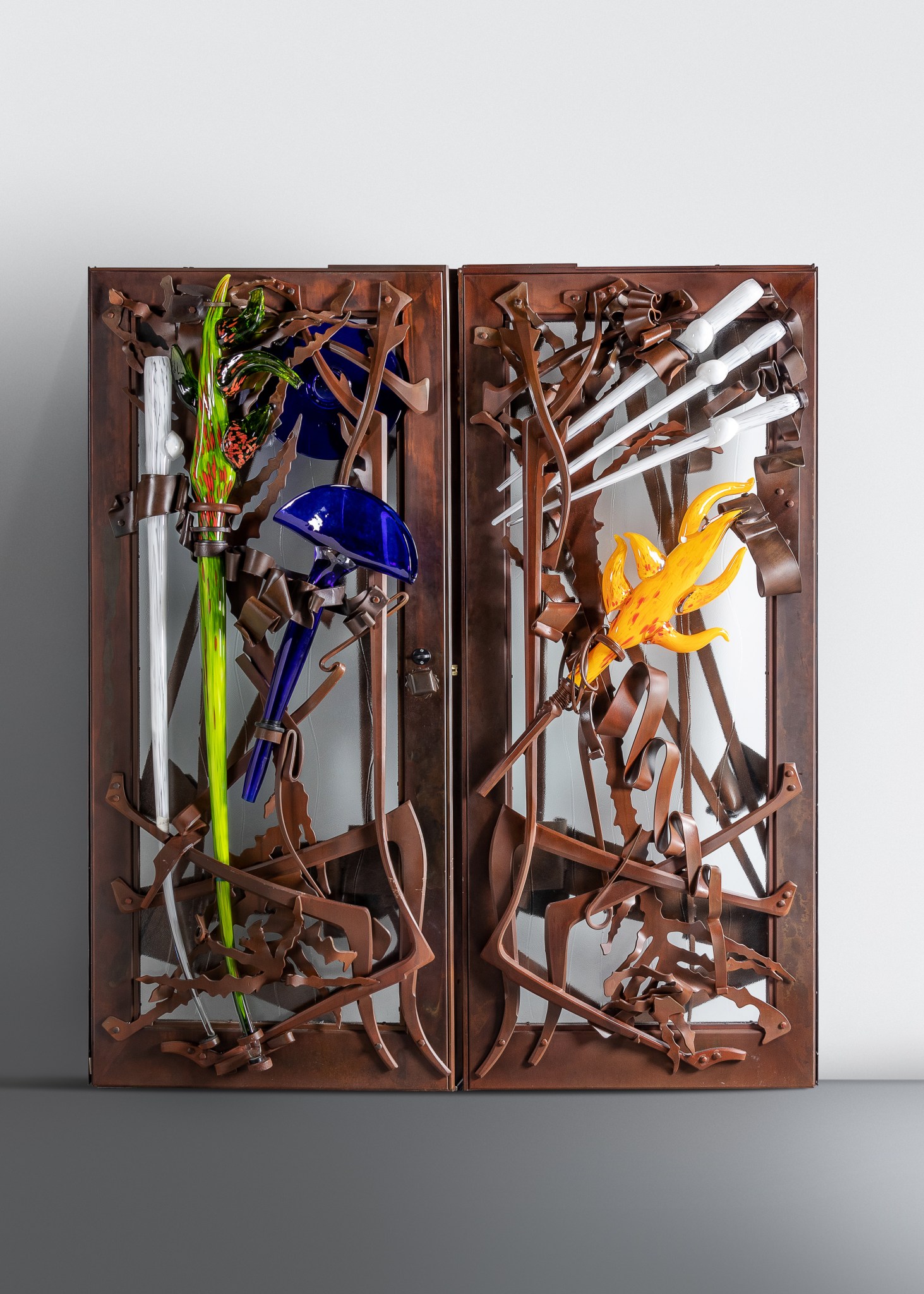
What you see: A pair of entrance doors fashioned in 2004 by Albert Paley, with glass elements by Martin Blank. Hindman estimates them at $30,000 to $50,000.
The expert: Hudson Berry, director and senior specialist for the Modern design department at Hindman. Who is Albert Paley? He’s one of the nation’s leading and most influential blacksmiths. He was instrumental in the revitalization of the craft, which had declined with the closures in the American automobile industry in the 70s and 80s. Paley’s sculptures can be seen all over the world, and he has made architectural contributions to numerous institutions across America. Through his work as an educator at the Rochester Institute of Technology, he has continued to inspire and foster the careers of the next generation of international blacksmiths.
Where was Albert Paley in his career in 2004, when he made these doors? And is he still active? The Springborn doors were conceived during his apex. He would have been 59 or 60 years old at the time of fabrication. He’s still fully active as an artist and designer.
How often has Paley worked with Martin Blank? How often have the two worked together on sets of doors or gates? The two artists have a multi-decade history of collaboration. Most take the form of sculpture, but it’s unlikely that they’ve worked on many doors together. Glass incorporated in functional kinetic design on an architectural scale poses obvious challenges, and requires an instrumental key ingredient: an imaginative and open-minded client!
How do these doors show how Paley has evolved since creating the Renwick Portal Gates in 1974? What do the two sets of doors have in common, aside from their fundamental purpose, and how do they differ? While there are obvious threads that connect the Portal Gates and the Springborn Doors, such as nods to the Art Nouveau and Arts & Crafts masters, the Springborn examples showcase Paley’s evolution as a designer. There is an incredible sense of rhythm and motion to the Portal Gates, but they also feel relatively restrained when considered alongside his later works. In the Springborn doors, we see much harder angles in dialogue with almost fabric-like elements placed atop jagged edges, while also incorporating a true sense of depth. All of which, in conjunction with Blank’s glass elements, creates harmonious tension more like that seen in Paley’s public works, with the overall design of the doors transcending the materials themselves.

What can we tell, just by looking, about how difficult these doors would have been to make? I’d say even in the hands of a master blacksmith such as Paley… extremely difficult. While we don’t know how long it took from commission to completion of the doors, Paley is said to have spent 3,800 hours over the course of seven months to complete the Renwick Portal Gates commission. Of course, the Springborn commission came 30 years later in Paley’s career, but it’s still an incredible display of virtuosity and material intelligence. Paley has a reputation for raising the bar with each project, and the Springborn doors are no exception.
How much input did the Springborns have in the design and appearance of the doors? I can’t speak to the level of collaboration or involvement the Springborns had with the overall look or specific details of the project, but we know from researching their relationships with other artists in the collection that their standard practice was to let them have total creative freedom.
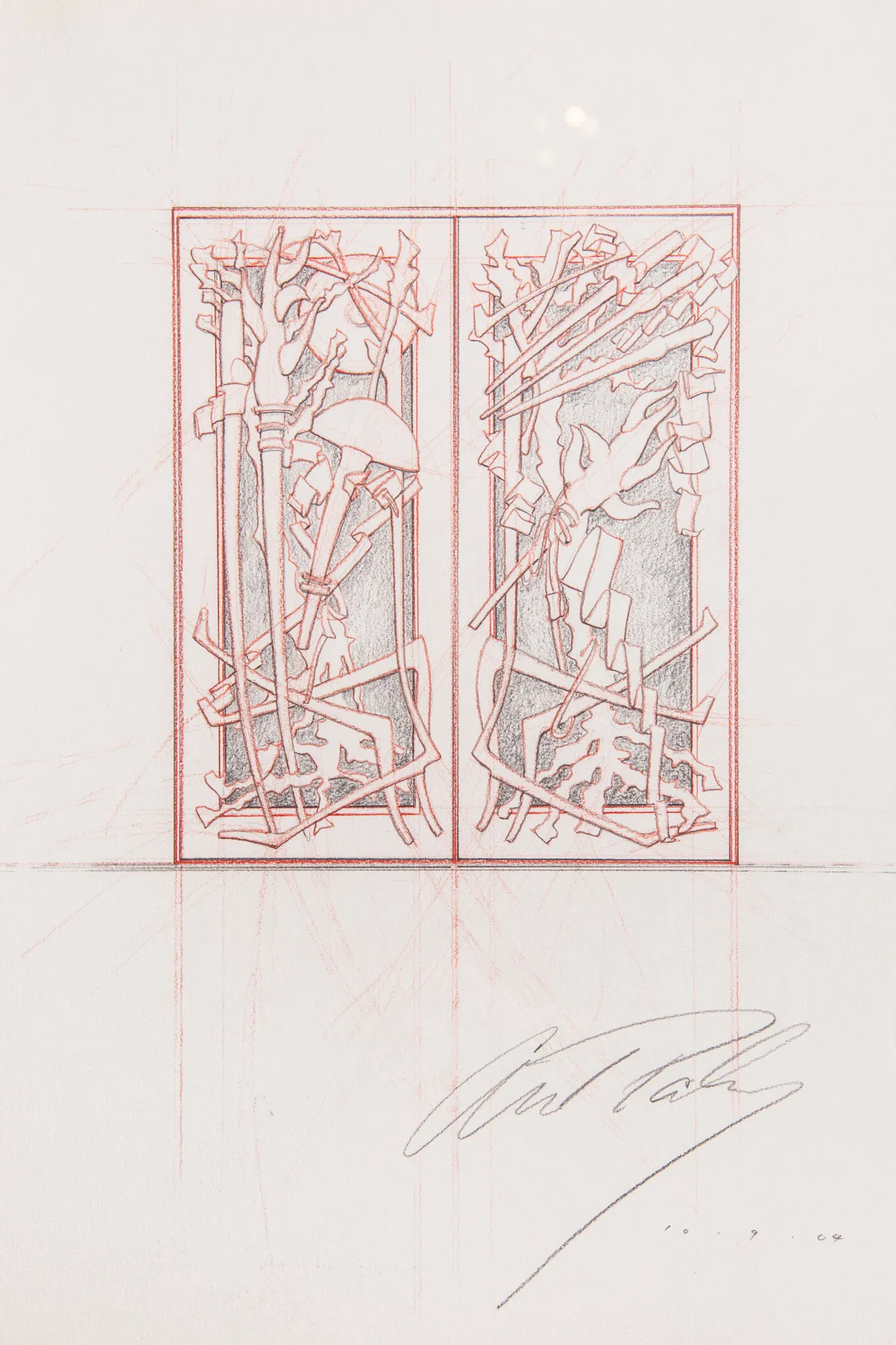
The lot includes the original proposal drawing from Paley. How rare is that? Do most Paley works that come to auction lack their design drawings? The majority of Paley’s works that include proposal drawings are commissioned by larger institutions. In this instance, we are thrilled to have access to the original proposal, which would only come to market under a very specific set of circumstances.
What are the Albert Paley doors like in person? What aspects elude the camera? Depth and scale, for sure. While we have an incredible photography department here at Hindman, an image on a smartphone just can’t replicate the presence of two seven-foot sculptural steel doors. And the tactile experience can’t be understated. The textures of the various materials are incredible, and an integral part of the experience. The steel presents as warm brown, with a rust-like appearance, but is actually quite smooth to the touch, similar to Blank’s glass elements. The internal glass isn’t simply frosted, it’s got an incredible pebbled texture intersected with inset vertical soft waves that seem to mimic rain on a window. If these were backlit, the effect would be almost cinematic. You could only imagine coming home to these on a daily basis, an interaction that would likely never get old.
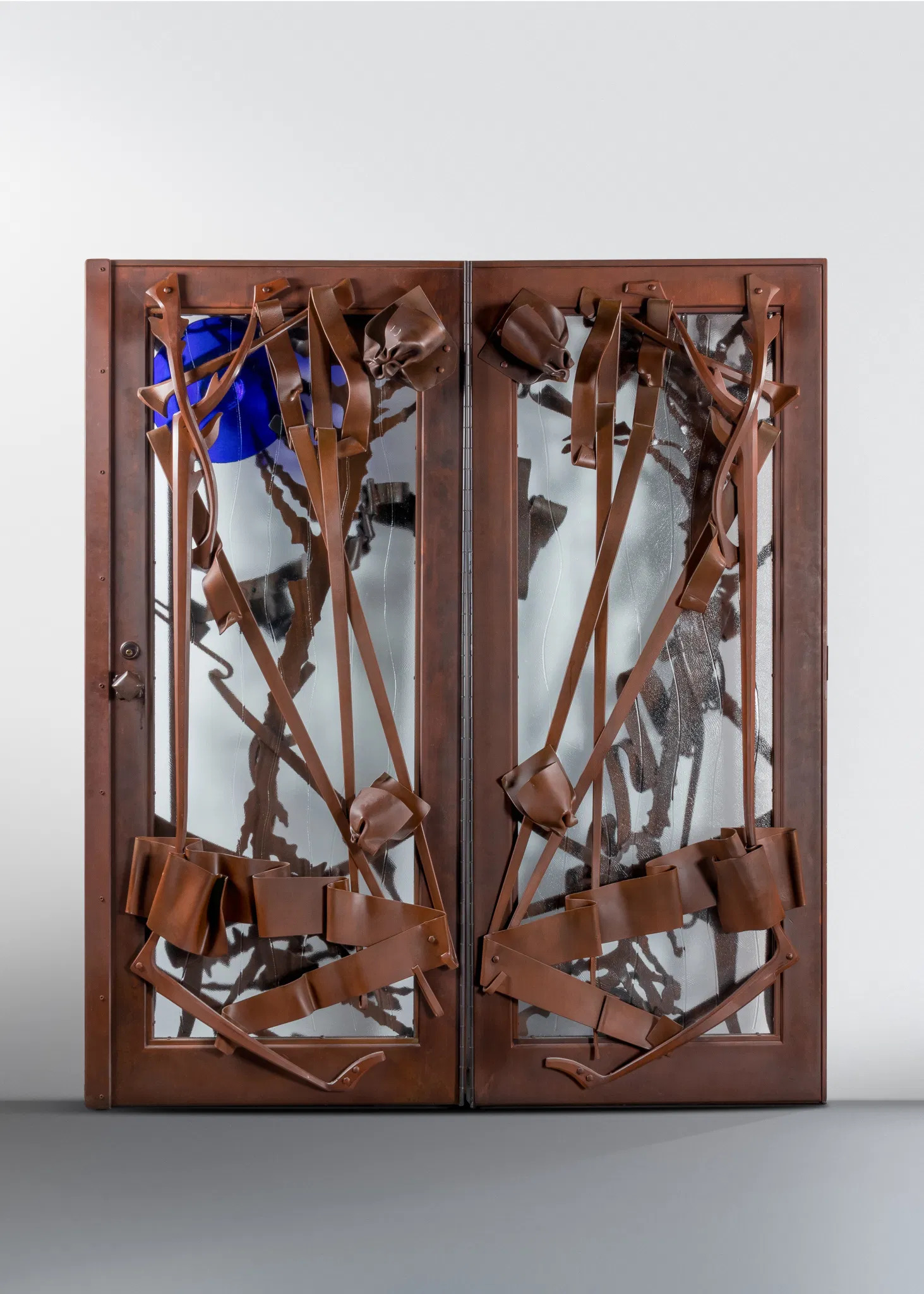
What is your favorite detail of the Albert Paley doors? To me, the doors are a holistic experience. Having assembled them and spent some quality time with them, I still think of them as chamber music or an ensemble cast–the interchange of the two mediums is so intertwined that choosing a single favorite detail starts to dismantle them.
Is the door design meant to be purely abstract, or are there colors, details, or other features woven in that have special meaning to the Springborns? Unfortunately, we didn’t have access to the Springborns’ correspondence with the artist on this particular project.
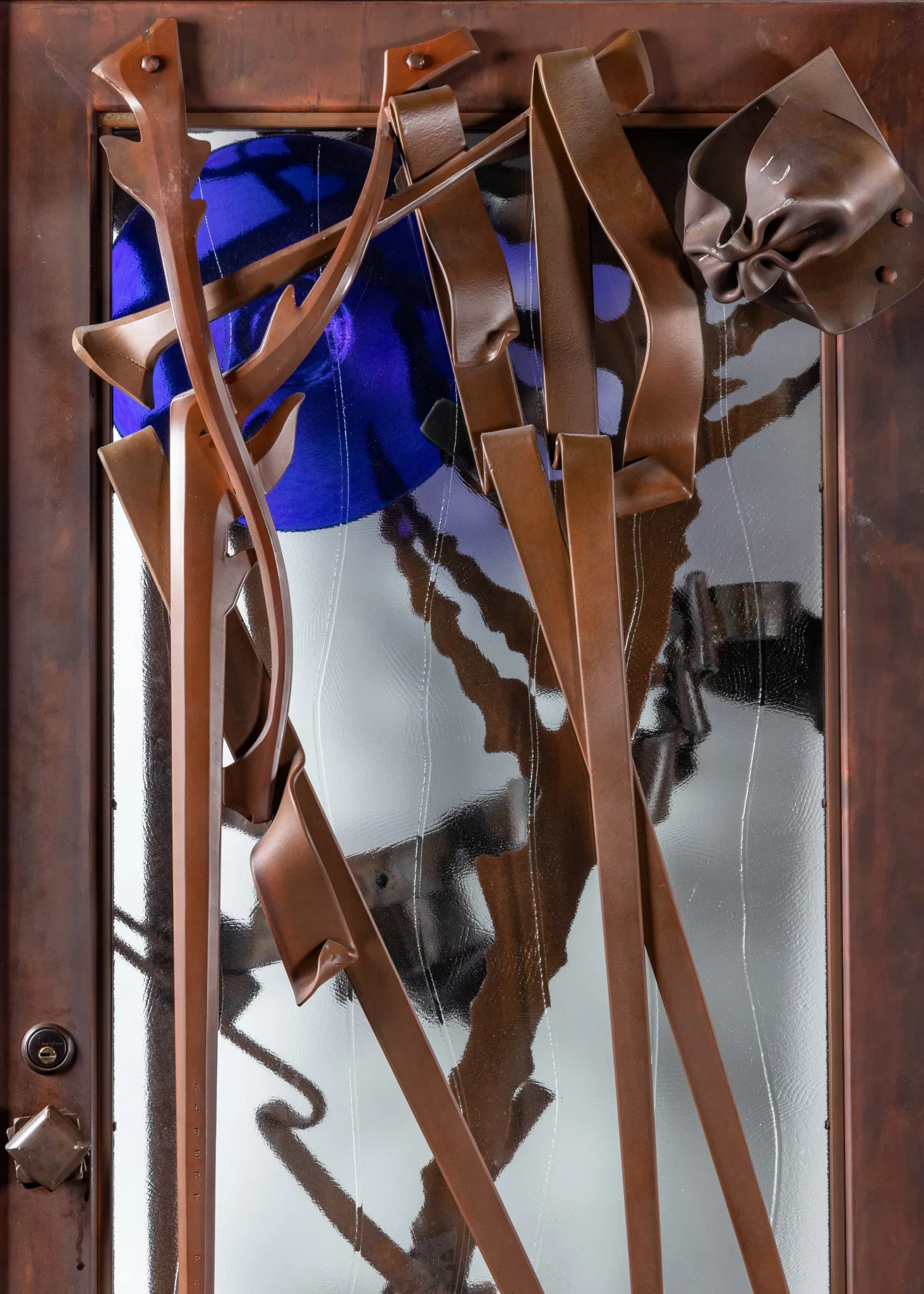
Could you talk about how well the Albert Paley doors work as a functional, integrated piece? Sadly, due to COVID-19 restrictions, I was unable to experience the doors in situ. But their construction is extremely robust, with every detail exquisitely crafted and tooled. Even the doorknob is a small sculpture unto itself! The doors also include all of the necessary hardware to facilitate full functionality once they arrive at their new home. I can only assume they are truly gratifying to open and close.
I see that the doors are not mirror images of each other, but they share some shapes in common… I find the dialogue of symmetry juxtaposed with asymmetry to be the most compelling element of the design, and it changes depending on how close you are to the doors. That dialogue can also be seen as a recurring theme in Paley’s work. For me, this is Paley alluding to his adoration for artists such as Hector Guimard, Louis Majorelle, Louis Comfort Tiffany, and Louis Sullivan.
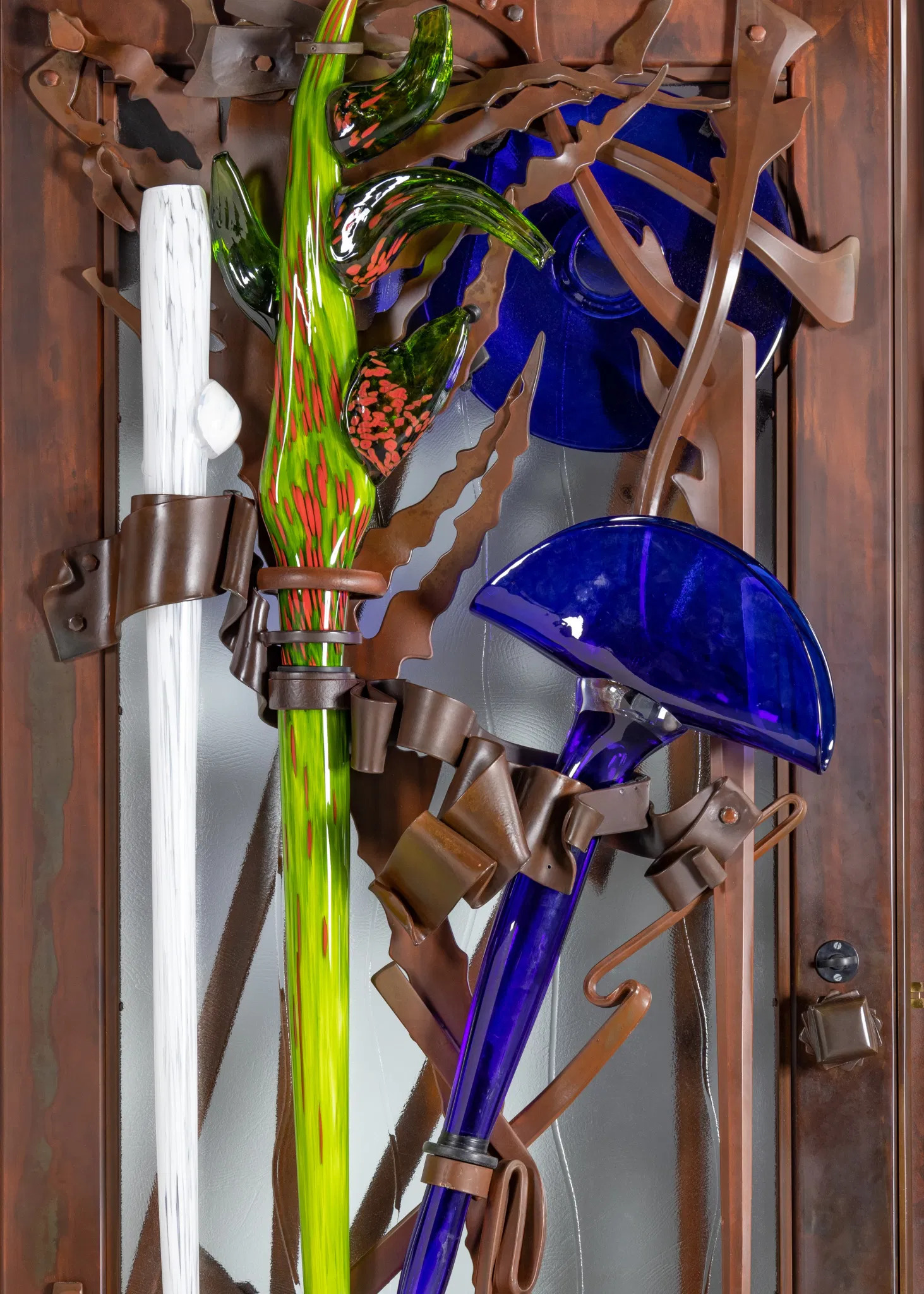
What did Paley and Blank do to ensure that the glass elements would be robust enough to serve as part of a functional set of front doors? They’re extremely well-engineered. The glass elements are held in place with a series of rubber gaskets and adjustable hard rubber setscrews to ensure that the glass isn’t compromised with regular use. And while the glass is hollow, it’s also quite thick-walled, and it’s less nimble than it appears.
How often do pieces by Albert Paley come to auction? Using LiveAuctioneers for metrics, and with the inclusion of the pieces in the Springborn Collection–as of March 2021, we are currently at 429 works, going as far back as 2003.
What is the world auction record for a work by Albert Paley? It’s a sculpture from 2013, titled Harlequin, which sold for $55,000 at Rago in 2018 as part of The Albert Paley Archives Part 1 auction. Of course, we hope the Paley works from the Springborn Collection will sit in the top percentile of achieved prices, if not setting new auction records themselves.
With these Albert Paley doors estimated at $30,000 to $50,000, a new world auction record for the artist could be set. What’s your opinion—could it happen? Could this lot do it? Yes. Given the importance of the client and how rarely Paley’s architectural private commissions come to market, the potential is certainly there for these to break and exceed any previous auction results.
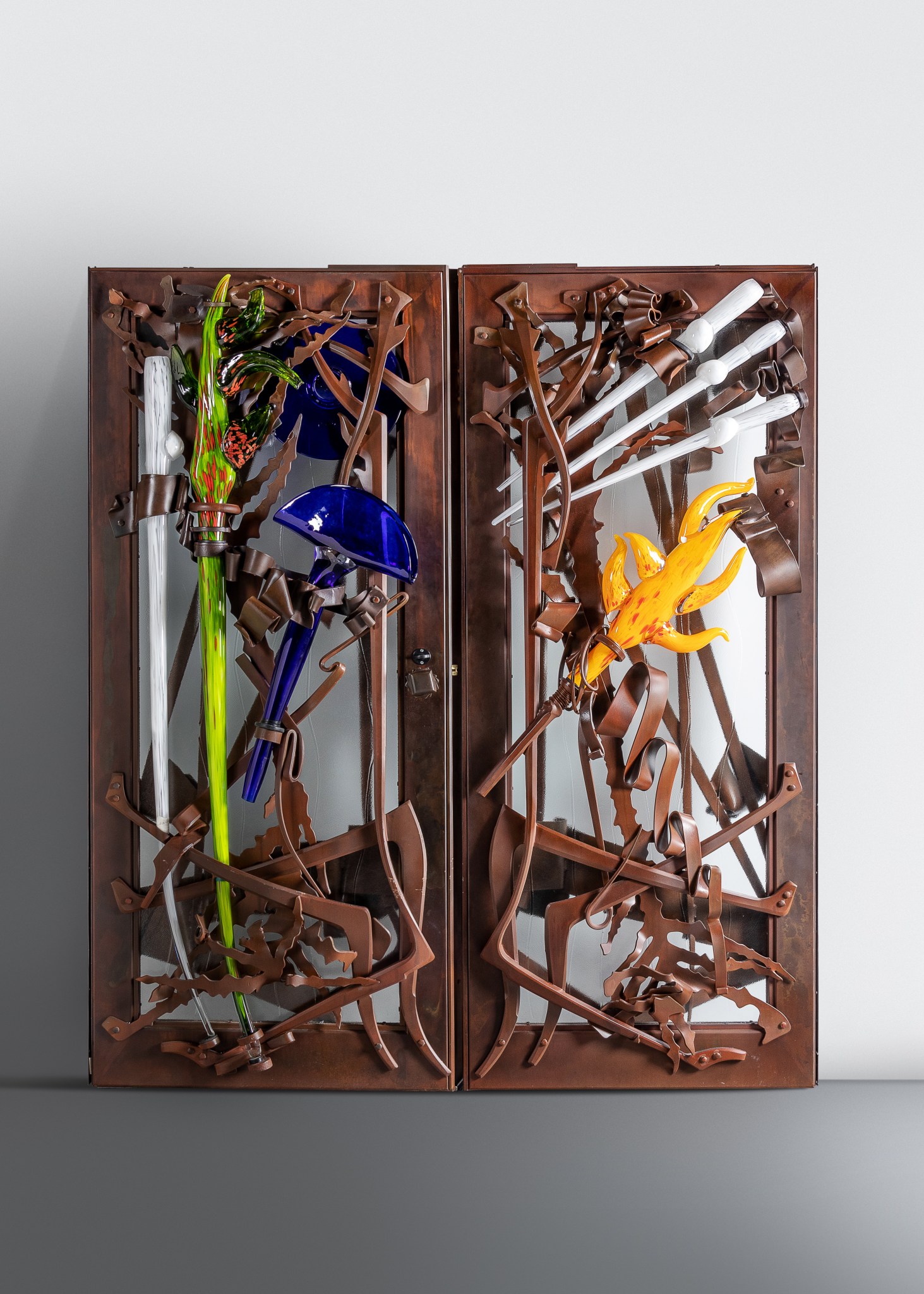
Why will these Albert Paley doors stick in your memory? Glenn Adamson wrote in his catalog essay for this lot: “Art-curious visitors to the home of Robert and Carolyn Springborn didn’t have long to wait. They were greeted right at the entrance by one of the collection’s most spectacular works.” That sums up the gravity of the Springborns as collectors and patrons. These doors truly served as the grand overture to the collection as a whole, setting the stage for surprises to come after you entered the home.
How to bid: The Albert Paley doors are lot 37 in The Springborn Collection of Contemporary Craft, a sale taking place at Hindman on March 23, 2021.
___
By Sheila Gibson Stoodley
Sheila Gibson Stoodley is a journalist and the author of The Hot Bid, which features intriguing lots coming up at auction.


